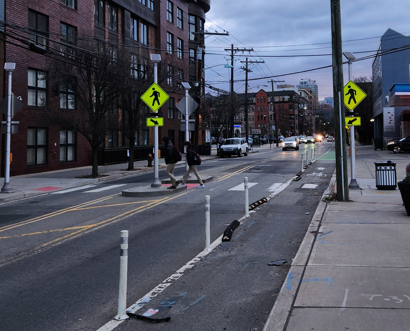Monday, March 11, 2024
The Rectangular Rapid Flashing Beacon System

You may have noticed a new technology in recent years aimed at helping to prevent pedestrian injuries, or even deaths, on and around New Jersey roads and crosswalks.
The Rectangular Rapid Flashing Beacon (RRFB) can be found at locations throughout the Garden State and beyond.
What Are They?
An RRFB is a user-activated, strobe-like alert that can be found at crosswalks that do not have typical traffic signals. RRFBs can be found at locations where a traditional, fully implemented traffic signal system isn’t warranted, particularly marked midblock crossings or uncontrolled intersections.
With any new system or technology, it could take some time to get acquainted with the equipment and exactly how it works.
How They Work
RRFBs are activated by pedestrians via a button below the pedestrian crossing sign and above the arrow pointing at the crossing. In some cases, there’s no button to press, with the system being activated simply by detecting the presence of a pedestrian, with the lights then automatically engaging.
Once activated, the flashing lights alert drivers to stop for people waiting to cross the street at a crosswalk. RRPBs have shown to reduce pedestrian crashes by almost 50 percent and some systems increased driver yield rates by as much as 90 percent
Here’s a video of an RRFB in action from the Safe Routes Resource Center: https://vimeo.com/413952756/b56b5eb9b0
It may seem like simple and straightforward technology but it might take some time to get used to a new device, whether for a motorist or a pedestrian, especially for those who may not be familiar with RRFBs.
For pedestrians:
- Press button to activate flashing lights
- Make sure all vehicles have stopped before crossing
- Begin walking after lights start flashing
For motorists:
- Stop for pedestrians (it’s the law)
- Avoid distractions so you can look for people crossing
- Obey the speed limit – that will ensure you can stop in time
For more information, visit the New Jersey Safe Routes Resource Center at www.saferoutesnj.org